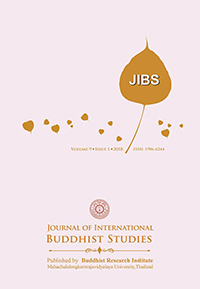An Evaluation of Chongqing’s Peculiar Geography’s Impact on the Development of Buddhism
Keywords:
Geography, Chongqing, BuddhismAbstract
It can be said that mountains form the backbones and rivers form the vessels of Chongqing, and the mountains and rivers that depend on each other generate an unique landscape culture, which exerts distinct influence on the development of Buddhism in Chongqing. Firstly, Buddhism was introduced to Sichuan through an overland route which centered uponSichuan instead of the Silk Road northward. There was a Yunnan-Burma Road crossed from north to south before entering Sichuan. What’s more, a northbound road, Gansu-Qianghai Road started from Chengdu to Golmud of Qinghai Province all the way along the Minjiang River till it headed west to the Western Regions at that time (the west area of Yumenguan, including what is now Xinjiang and parts of Central Asia). Besides, there were two ancient plank paths, namely Baoxie Path and Jinniu Path stretching eastward coming out of Sichuan. Secondly, the architectural layouts of temples in Chongqing are greatly impacted by the topographic feature,which can be shown by numerous ancient towns and Buddhist Cliffside Images complex, such as Dazu Rock Carvings. Thirdly, the geographicallocation of Chongqing makes it easy to hold but hard to attack, which delivers a distinct advantage to Chongqing in the history of warfare. During the War of Resistance against Japan, eminent monks followed to arrive in Sichuan as the National Government of the Republic of China moved to Chongqing, creating a glorious period in the modern history of Buddhism in this city. In 1930, the Buddhist Taixu set up the Han-Tibetan Buddhist Teaching College in Jinyun Mountain, Beibei, Chongqing. It was in the year of 1937 that the Chinese Inner Studies Institute established by Ouyang Jingwu was relocated to Jiangjin in Chongqing from Nanjing. Therefore, Chongqing became the center of Buddhist culture in China at that time.
References
Shi Shengfu. Buddhism in Chongqing. Chongqing: Chongqing Press, 2000.
Guo Xiangying. Collections of Epigraph of Dazu Stone Carvings. 1999.
Huang Li. Laitan Stone Carvings. Chongqing: Chongqing Press. 2012.
Thapar Romila., A History of India vol. 1, New Delhi, Penguin Publications 1977
Thapar Romila., From Lineage to State New York, OUP 1992







